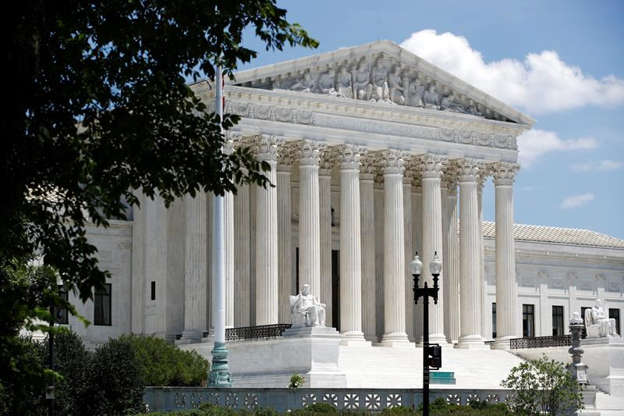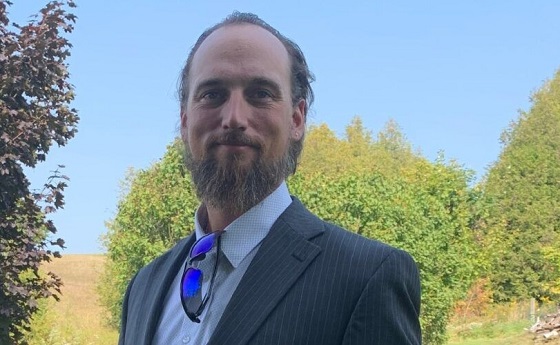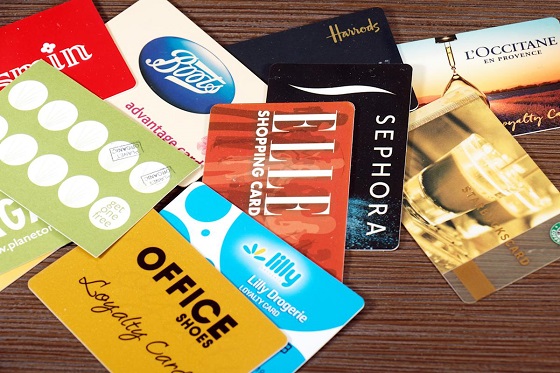COVID-19
Court Ruling on Murthy Misses Point Entirely

From the Brownstone Institute
The United States Supreme Court ruled, in a 6 to 3 decision, that the plaintiffs in the most important free speech case in decades did not have standing to ask for preliminary injunctive relief.
That is wrong.
In her majority opinion, Justice Amy Coney Barrett bent over sideways to avoid judging the case on its merits – the allegation is that various and sundry government agencies coerced private social media companies to remove posts and tweets and such they did not like – and focused instead on whether or not the plaintiffs had the right, or standing, to ask for and be granted such relief.
The plaintiffs, essentially, had their content throttled or removed from social media platforms at the behest of the government because they did not follow the government line on the pandemic response and election security, daring to question things like social distancing – even Dr. Anthony Fauci has admitted they just made that up – and how secure – or unsecure – a “vote-by-mail” election could possibly be.
The request before the court was to allow an injunction against a number of government agencies that barred improper communication with the social media platforms. The question of whether those agencies did in fact do that – essentially violating the First Amendment rights of the plaintiffs – does not appear at issue. As Justice Samuel Alito (joined in opposition to the ruling by Justices Clarence Thomas and Neil Gorsuch) said in his blistering dissent, that unquestionably happened.
The case, known as Murthy V. Missouri, involves two states and a number of private plaintiffs, all claiming that they were improperly censored – and thus damaged – by federal agencies and/or the dubious “cut out” front groups they created. Alito focused on one plaintiff – Jill Hines, who ran a Louisiana health-related (read pandemic response criticism) that was consistently degraded by Facebook after calls and pronouncements from the White House – in his dissent, noting that she unquestionably had standing (even Barrett admitted that plaintiff was closest, as it were), especially in light of the fact the government itself admitted the plaintiff had been damaged.
In today’s ruling, “The Court, however, shirks that duty and thus permits the successful campaign of coercion in this case to stand as an attractive model for future officials who want to control what the people say, hear, and think,” wrote Alito. “That is regrettable. What the officials did in this case was more subtle than the ham-handed censorship found to be unconstitutional (in a separate case), but it was no less coercive. And because of the perpetrators’ high positions, it was even more dangerous. It was blatantly unconstitutional, and the country may come to regret the Court’s failure to say so. Officials who read today’s decision…will get the message. If a coercive campaign is carried out with enough sophistication, it may get by. That is not a message this Court should send.”
Barrett wrote that, while she was not opining on the merits of the case, the plaintiffs could not show standing to receive a preliminary injunction. Such an injunction would have immediately barred government abuse going forward, but Barrett held, basically, that just because it did happen doesn’t mean it will happen again and therefore the plaintiffs are not entitled to preliminary (or prospective) relief.
As part of her reasoning, Barrett said that social media platforms did act on their own, at least on occasion, as part of their standard “content moderation” efforts and there was little or no “traceability” back to specific government individuals showing an immediate and direct correlation between a government compliant and a private company action.
Wrong.
First, in the Hines matter, even Barrett noted there was an element of traceability (that was enough for Alito to say she unquestionably had standing to seek relief and, therefore, the case should have been decided on its merits).
Second, companies like Facebook, which in the past have paid huge fines to the government, are in a very precarious position vis-a-vis federal regulation. From “Section 230” protections – a government code that limits their exposure to civil liability when deciding to drop content – to ever-growing threats of further government intervention and potential anti-trust actions, social media companies are internally incentivized to comply with government requests.
In other words, it is not at all a coincidence that a very large percentage of social media execs are “former” government employees and elected officials.
“In sum, the officials wielded potent authority. Their communications with Facebook were virtual demands,” Alito wrote. “And Facebook’s quavering responses to those demands show that it felt a strong need to yield. For these reasons, I would hold that Hines is likely to prevail on her claim that the White House coerced Facebook into censoring her speech.”
In her ruling, Barrett made other significant errors. First, she referred to the “Election Integrity Partnership” (EIP) as a “private entity,” and therefore able to make requests of social media companies.
In fact, the EIP (a group of academic “misinformation specialists”) was morphed into existence by the Department of Homeland Security, specifically its Cybersecurity and Infrastructure Security Agency, typically known as CISA. The EIP was funded by the government, many of its workers were former (though for many, ‘former’ may be a stretch) federal security agency employees, and the EIP specifically and consistently did the bidding of CISA when asked.
For Barrett to call the EIP a “private entity” shows a complete (intentional?) misunderstanding of the legal landscape and the reality of censorship-industrial complex.
The EIP and other government-sponsored cutout groups that make up the censorship-industrial complex are as independent from the government and the deep state as a foot is independent from a leg.
Barrett also claimed that similar government activities seemed to have lessened in the recent past, making the need for the going-forward injunction unnecessary.
Such a statement is impossible to prove as being true or false – especially after today – but making the assumption that it is even vaguely true, Barrett again misses the mark. If the government is censoring less now than it did two years ago it is because of the massive amount of public attention that has been drawn to the despicable practice by the press and, to be blunt, this very lawsuit.
CISA, etc. did not wake up one morning 18 months ago and say ‘Hey, we better cool it on this” because they suddenly realized they were most likely violating the Constitution; they did so because of the public – and Congressional – pressure.
And now with at least the legal pressure lessened (and an election coming up), to believe that the activities will not increase is naïve to the point of childish – that’s why this future, going forward, prospective injunction was so important.
That didn’t stop the Biden administration from crowing and, presumably, figuring out to ramp up the program for November.
Critics of the decision were loud and voluminous. Appearing on Fox News, legal commentator Jonathan Turley said that “standing issues” are often “used to block meritorious claims” and that the government’s “censorship by surrogate makes a mockery of the First Amendment.”
“The Supreme Court’s decision,” said White House press secretary Karine Jean-Pierre, “helps ensure the Biden administration can continue our important work with technology companies to protect the safety and security of the American people.”
Matt Taibbi, one of the reporters behind the outing of the “Twitter files,” noted that KJP’s statement is astonishingly egregious, but also very telling. She essentially admits government censorship is occurring and claims it is good:
That “important work,” of course, includes White House officials sending emails to companies like Facebook, with notes saying things like ‘Wanted to flag the below tweet and am wondering if we can get moving on having it removed ASAP.’ The Supreme Court sidestepped ruling on the constitutionality of this kind of behavior in the Murthy v. Missouri case with one blunt sentence: “Neither the individual nor the state plaintiffs have established Article III standing to seek an injunction against any defendant.”
“The great War on Terror cop-out, standing — which killed cases like Clapper v. Amnesty International and ACLU v. NSA — reared its head again. In the last two decades, we’ve gotten used to the problem of legal challenges to new government programs being shot down precisely because their secret nature makes collecting evidence or showing standing or injury difficult, and Murthy proved no different.”
Dr. Jay Bhattacharya, an internationally recognized Stanford medical professor, is one of the private plaintiffs in the suit. Bhattacharya is one of the co-authors of the Great Barrington Declaration, which called for a more targeted and rational response to the pandemic response. When it comes to standing, he points directly to an email from then-National Institutes of Health Chief (Tony Fauci’s sort-of boss) Francis Collins, calling on his fellow government employees to engage in a “devastating takedown” of Bhattacharya and the Declaration itself.
Barrett wrote that “Enjoining the Government defendants, therefore, is unlikely to affect the platforms’ content-moderation decisions,” an opinion Bhattacharya was having none of.
“Unlikely to continue to be damaged?” asked Bhattacharya. “How do we know that? And now because of this ruling we have no legal protection from it happening. The court ruled that you can censor until you get caught and even then there will be no penalty.”
Because of the focus on standing, Bhattacharya likened today’s ruling to giving the go-ahead to “broadly censor ideas” as long as you make sure not to traceably censor a specific individual.
A disappointed Bhattacharya has hopes for the future – the case was, again, not decided on its merits and is simply remanded without the injunction back to federal district court in Louisiana – but thinks electeds need to pass laws to stop the censorship.
“At this point, Congress has to act and this needs to be an election issue,” Bhattacharya said.
John Vecchione, New Civil Liberties Alliance Senior Litigation Counsel and the lawyer for four of the five private individuals (including Hines and Bhattacharya) said today’s ruling was “not in accordance with the facts” of the situation.
“There is a level of unreality about this opinion,” Said Vecchione, adding that it reads like a “roadmap for government censors.”
While some in the media have tried to identify this case as having “right-wing” support, Vecchione noted it was originally filed while Donald Trump was president and therefore goes far beyond partisan politics to the heart of the rights of American citizens.
The suit, as noted, goes back to district court and Vecchione says they will continue to gather facts and depositions and even more specific instances of “traceability” – he says they already have enough, but Barrett did not agree – and keep working it through the courts. He said he expects to be back at the Supreme Court sometime in – hopefully – the near future.
“Meanwhile, any government agency, any administration can censor any message they don’t like,” Vecchione said.
And no matter a person’s politics, that is just plain wrong.
Or as Justice Alito wrote:
“For months, high-ranking Government officials placed unrelenting pressure on Facebook to suppress Americans’ free speech. Because the Court unjustifiably refuses to address this serious threat to the First Amendment, I respectfully dissent.”
Republished from the author’s Substack
COVID-19
Judge denies Canadian gov’t request to take away Freedom Convoy leader’s truck

From LifeSiteNews
A judge ruled that the Ontario Court of Justice is already ‘satisfied’ with Chris Barber’s sentence and taking away his very livelihood would be ‘disproportionate.’
A Canadian judge has dismissed a demand from Canadian government lawyers to seize Freedom Convoy leader Chris Barber’s “Big Red” semi-truck.
On Friday, Ontario Court of Justice Judge Heather Perkins-McVey denied the Crown’s application seeking to forfeit Barber’s truck.
She ruled that the court is already “satisfied” with Barber’s sentence and taking away his very livelihood would be “disproportionate.”
“This truck is my livelihood,” said Barber in a press release sent to LifeSiteNews.
“Trying to permanently seize it for peacefully protesting was wrong, and I’m relieved the court refused to allow that to happen,” he added.
Criminal defense lawyer Marwa Racha Younes was welcoming of the ruling as well, stating, “We find it was the right decision in the circumstances and are happy with the outcome.”
John Carpay, president of the Justice Centre for Constitutional Freedoms (JCCF), said the decision is “good news for all Canadians who cherish their Charter freedom to assemble peacefully.”
READ: Freedom Convoy protester appeals after judge dismissed challenge to frozen bank accounts
“Asset forfeiture is an extraordinary power, and it must not be used to punish Canadians for participating in peaceful protest,” he added in the press release.
As reported recently by LifeSiteNews, the Canadian government claimed that Barber’s truck is an “offence-related property” relating to his involvement in the 2022 protests against Canada’s COVID mandates.
At this time, the court ruling ends any forfeiture proceedings for the time being, however Barber will continue to try and appeal his criminal conviction and house arrest sentence.
Barber’s truck, a 2004 Kenworth long-haul he uses for business, was a focal point in the 2022 protests. He drove it to Ottawa, where it was parked for an extended period of time, but he complied when officials asked him to move it.
On October 7, 2025, after a long trial, Ontario Court Justice Perkins-McVey sentenced Barber and Tamara Lich, the other Freedom Convoy leader, to 18 months’ house arrest. They had been declared guilty of mischief for their roles as leaders of the 2022 protest against COVID mandates, and as social media influencers.
Lich and Barber have filed appeals of their own against their house arrest sentences, arguing that the trial judge did not correctly apply the law on their mischief charges.
Government lawyers for the Crown have filed an appeal of the acquittals of Lich and Barber on intimidation charges.
The pair’s convictions came after a nearly two-year trial despite the nonviolent nature of the popular movement.
COVID-19
Freedom Convoy protester appeals after judge dismissed challenge to frozen bank accounts

From LifeSiteNews
Protestor Evan Blackman’s legal team argues Trudeau’s Emergencies Act-based bank account freezes were punitive state action tied directly to protest participation.
A Freedom Convoy protester whose bank accounts were frozen by the Canadian government says a judge erred after his ruling did not consider the fact that the funds were frozen under the Emergencies Act, as grounds for a stay of proceedings.
In a press release sent out earlier this week, the Justice Centre for Constitutional Freedoms (JCCF) said that Freedom Convoy protestor Evan Blackman will challenge a court ruling in his criminal case via an appeal with the Ontario Superior Court of Justice.
“This case raises serious questions about how peaceful protest is treated in Canada and about the lasting consequences of the federal government’s unlawful use of the Emergencies Act,” noted constitutional lawyer Chris Fleury. “The freezing of protestors’ bank accounts was part of a coordinated effort to suppress dissent, and courts ought to be willing to scrutinize that conduct.”
Blackman was arrested on February 18, 2022, during the police crackdown on Freedom Convoy protests against COVID restrictions, which was authorized by the Emergencies Act (EA). The EA was put in place by former Prime Minister Justin Trudeau’s Liberal government, which claimed the protests were violent, despite no evidence that this was the case.
Blackman’s three bank accounts with TD Bank were frozen due to his participation in the Freedom Convoy, following a directive ordered by Trudeau.
As reported by LifeSiteNews, in November of this year, Blackman was convicted at his retrial even though he had been acquitted at his original trial. In 2023, Blackman’s “mischief” and “obstructing police” charges were dismissed by a judge due to lack of evidence and the “poor memory of a cop regarding key details of the alleged criminal offences.”
His retrial resulted in Blackman getting a conditional discharge along with 12 months’ probation and 122 hours of community service, along with a $200 victim fine surcharge.
After this, Blackman’s application for a stay of proceedings was dismissed by the court. He had hoped to have his stay of proceedings, under section 24(1) of the Charter of Rights and Freedoms, allowed. However, the judge ruled that the freezing of his bank accounts was legally not related to his arrest, and because of this, the stay of proceedings lacked standing.
The JCCF disagreed with this ruling, noting, it “stands in contrast to a Federal Court decision finding that the government’s invocation of the Emergencies Act was unreasonable and violated Canadians’ Charter rights, including those targeted by the financial measures used against Freedom Convoy protestors.”
As of press time, a hearing date has not been scheduled.
In 2024, Federal Court Justice Richard Mosley ruled that Trudeau was “not justified” in invoking the Emergencies Act.
In early 2022, the Freedom Convoy saw thousands of Canadians from coast to coast come to Ottawa to demand an end to COVID mandates in all forms. Despite the peaceful nature of the protest, Trudeau’s federal government enacted the EA in mid-February.
After the protesters were cleared out, which was achieved through the freezing of bank accounts of those involved without a court order as well as the physical removal and arrest of demonstrators, Trudeau revoked the EA on February 23, 2022.
-

 International10 hours ago
International10 hours agoGeorgia county admits illegally certifying 315k ballots in 2020 presidential election
-

 Business1 day ago
Business1 day agoICYMI: Largest fraud in US history? Independent Journalist visits numerous daycare centres with no children, revealing massive scam
-

 Alberta1 day ago
Alberta1 day agoAlberta project would be “the biggest carbon capture and storage project in the world”
-

 Energy24 hours ago
Energy24 hours agoCanada’s debate on energy levelled up in 2025
-

 Haultain Research12 hours ago
Haultain Research12 hours agoSweden Fixed What Canada Won’t Even Name
-

 Business11 hours ago
Business11 hours agoWhat Do Loyalty Rewards Programs Cost Us?
-

 Business1 day ago
Business1 day agoSocialism vs. Capitalism
-

 Energy1 day ago
Energy1 day agoNew Poll Shows Ontarians See Oil & Gas as Key to Jobs, Economy, and Trade




